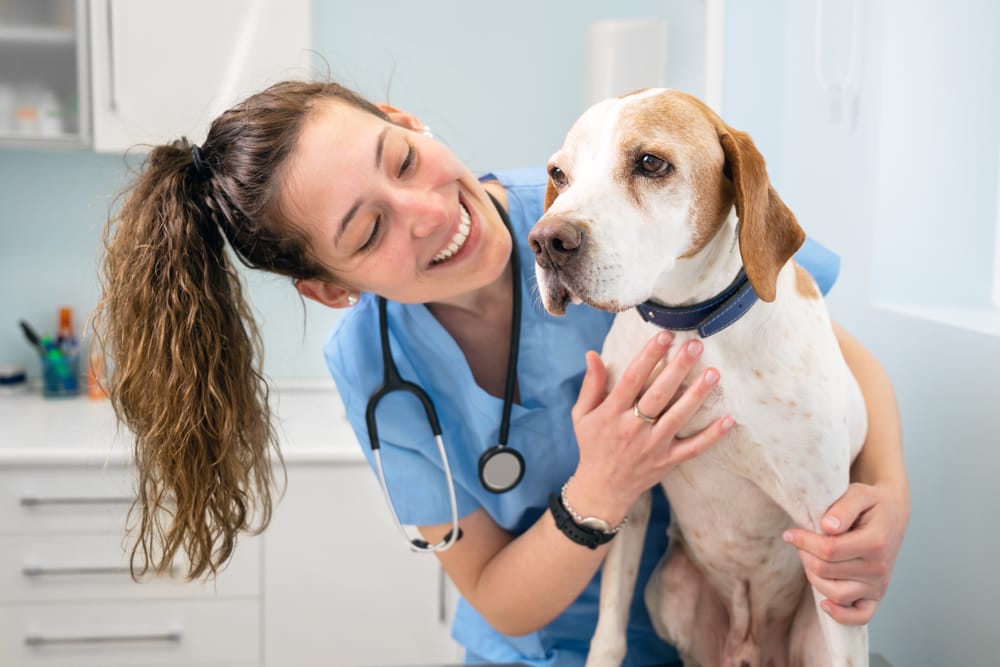
“Well, I hope you get COVID and DIE!” This was a not-so-loving sentiment I received in the past after refusing to comply with a non-client. This person didn’t know me, and I am not sure what the circumstances were that led them to make such an inflammatory statement. And while this is one of my extremes, unfortunately, these are the sorts of communications that many veterinarians are experiencing day in and day out. Now, this is just one bad egg, and I need to stress that far and above, I have wonderful clients, but not every vet can say the same.
September marks a very important month — Suicide Prevention Month. According to the National Institute for Mental Health, suicide is among the top four causes of death for individuals aged 10-44! This impacts a huge number of individuals when you think about it. According to the American Foundation for Suicide Prevention (afsp.org), the overall age-adjusted suicide rate in the United States remained nearly the same, at 14.21 per 100,000 in 2022 and 14.12 per 100,000 in 2023. This is equivalent to one suicide every 13 minutes! It is important to add that 90% of adults surveyed at the same time in the U.S. believed that suicide could be prevented at least some of the time.
Before individuals consider suicide, there may be warning signs that not everyone is aware of. Below are some warning signs according to 988 Lifeline, a national suicide prevention source, to help determine if a loved one is at risk for suicide, especially if their behavior is new, has increased, or seems related to a painful event, loss, or change.
- Talking about wanting to die or to kill themselves
- Looking for a way to kill themselves, like searching online or buying a gun
- Talking about feeling hopeless or having no reason to live
- Talking about feeling trapped or in unbearable pain
- Talking about being a burden to others
- Increasing the use of alcohol or drugs
- Acting anxious or agitated; behaving recklessly
- Sleeping too little or too much
- Withdrawing or isolating themselves
- Showing rage or talking about seeking revenge
- Extreme mood swings
Suicide prevention is particularly close to my heart, as research shows that veterinary professionals are found to commit suicide up to 2.5 times higher than the general population. Veterinarians and dentists, sadly, are consistently the top medical professionals linked to higher suicide rates. In 2014, a convenience sample survey of 11,627 US veterinarians found 9 percent had current serious psychological distress, 31 percent had experienced depressive episodes, and 17 percent had experienced suicidal ideation since leaving veterinary school. Research suggests that this number has likely increased since 2022, following stressors from COVID. Multiple studies have been done to try and understand why veterinarians, specifically as a profession, appear to be so much more impacted.
One study cited a variety of possible work-related factors, including, but not limited to:
- long hours (most work 50+ hours each week)
- work overload
- practice-management responsibilities
- client expectations and complaints
- having to communicate bad news
- rising costs of veterinary care
- performing euthanasia and having direct access to those drugs
- poor work-life balance
- professional isolation and the negative stigma associated with seeking mental health care
- student debt
- burnout (many colleagues retired or sought other sources of non-client-facing medicine, such as telemedicine or research post-COVID)
- and finally, striving for perfectionism
The above are in no way listed in any particular order, but I have personally experienced stress from all of the above.
Now, this blog is in no way to serve as a replacement for seeking professional help (if needed) but rather to provide a framework for seeking to prevent suicide. The acronym CARE is a helpful summary:
CONNECT – talking to people is key, and meeting them where they are or figuring out a way to help that person feel better. This could be as simple as asking someone about their day or greeting them kindly.
ASSESS – getting to know someone to better understand them can lead to understanding how to best communicate and help them. Knowing more about a person can help determine changes in their behavior or well-being.
RESPOND – noticing a change and asking how you can help or what you can do to help them feel better. Maybe this is time off or even just listening. It can also mean providing that individual with confidential, free means of sharing their feelings. For veterinarians, NOT ONE MORE VET was created as such an outlet.
ENACT – establishing rechecks with that individual to ensure that they are feeling better and finding outlets to address their stressors. Establish a walking buddy, for example.
Mental health is not just a September focus, but instead is something we need to be aware of every day. It starts with us being kind to each other, being mindful of what we say and do both in person and online. The internet, social media, and cyberbullying have done nothing good for everyone’s mental health, not just veterinarians. We should all THINK before we speak or type: Is what we have to say TRUE, HELPFUL, INSPIRING, NECESSARY, and KIND? Lean into kindness, but take the approach, “If you have nothing nice to say, then don’t say anything at all.”
If you are in crisis, call or text the 988 Suicide & Crisis Lifeline at 988, available 24 hours a day, 7 days a week. The Lifeline provides confidential support to anyone in suicidal crisis or emotional distress. Support is also available via live chat. Para ayuda en español, llame al 988.
National Suicide Prevention Hotline (800) 273-8255
Not One More Vet, Inc. is a 501c3 with the goal of ending suicide in the veterinary community.
– Dr. Smallwood

